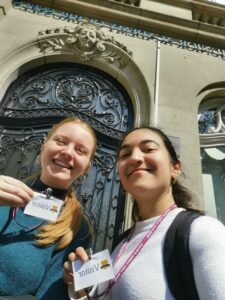Our project
"What's up school" in a nutshell
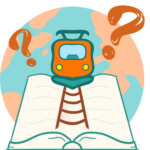
Everything started with two business school students…
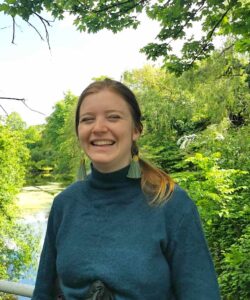
Clementine
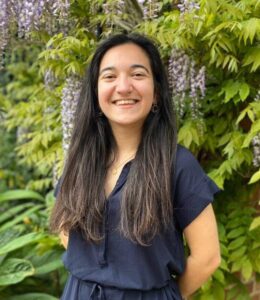
Marie
…united by the desire to carry out a meaningful project for their master thesis!
We went on a two-month tour of Europe to visit schools and to see how schools are progressing these days.
We collected collected good practices and innovative pedagogical methods to share those with students all over Europe.
You can find all of our results on this website!
Genesis
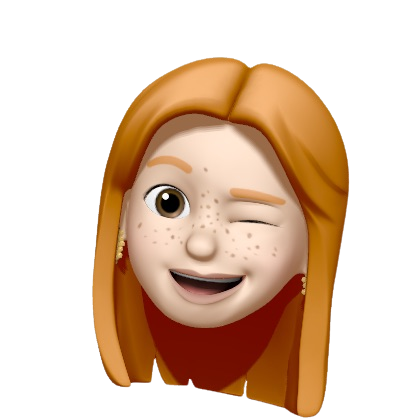
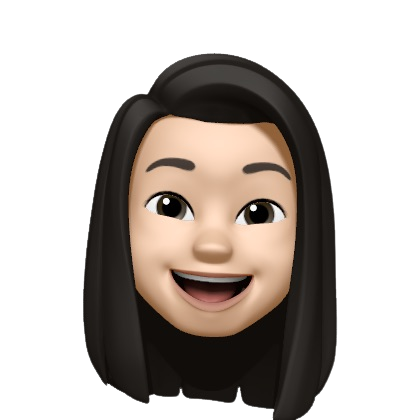
Our project step by step
STEP 1
Define our project
#1 Precise our project
After deciding to launch this learning expedition, we had to figure out the details of our project.
- When? 15 April to 15 June 2022
Due to our respective university calendars, we decided to go on our trip for two months. It was enough time to visit several countries and schools, and to gather enough information for our study.
- Where? Schools in Europe
We decided to focus our study on European schools because they are close to France geographically and culturally. We decided to visit schools of all kinds, typical ones as experimental ones, private and public ones… Our goal was to widen our horizons on education and all of its different materializations.
- How? By train
For ecological reasons, we decided to do our trip by train. Because of this, we had to focus on school systems near France. To do so, we used the Interrail system which offered us great flexibility, essential in this kind of project.
#2 Pick a list of countries
We decided to focus on the European countries doing better than France at the PISA test (23rd in 2018). That way, we could observe what countries which outrank us do differently. We also picked countries near France for accessibility issues in trains regarding the duration of our trip. Here is our final itinerary:
- Belgium (17th)
- England (10th)
- Germany (16th)
- Denmark (15th)
- Poland (8th)
- Italy (<France)
![]()
![]()
![]()
![]()
![]()
![]()
*Our first itinerary was different, including Sweden (13th), Finland (7th) and Estonia (3rd) which are at the top of the PISA ranking. Due to a lack of financial resources, we were forced to change our initial plan and go to Poland and Italy instead. In the end, those countries were fascinating too!
If you want more information, you can check:
#3 Set our goals
Since the beginning, we wanted as many people as possible to benefit from our learning expedition. To do so, we planned on producing a booklet for teachers who do not have the opportunity to take part in an expedition like ours but who could greatly benefit from it. Thus, our first goal was to make our journey useful to others and to share it by turning it into a written record.
Our second goal was to study innovative pedagogical methods throughout Europe. But to do so, we had to understand the commonly used pedagogical tools in each country. To do so, we asked students and teachers in each school a list of questions regarding different topics:
- Teacher-Student relationship
- Parents-Teacher relationship
- Impact of COVID-19
- School Curriculum / Homeworks
- Extra-curricular activities
- Evaluation methods and grids
- Differentiation in class…
To know more about the issues we discussed during our trip, we invite you to read our articles :
STEP 2
Create our identity
#1 Pick a name
Picking a name is a difficult task in a project like ours. It is hard to find a name that embodies all of the major aspects of our field research and that still sounds “catchy”. Therefore, we listed the main characteristics of our project and their synonyms, and we created a list of working combinations. You can find the list of our favourites below:
- Learn from EU
- Road’N school
- What’s up school
- Map your school
- Road 2 school
- School tour
- School stories
Then, we submitted this list to our relatives, friends and comrades to choose their favourite (in bold). After a lot of discussions between Clementine and me, we picked up the best in our eyes, representing our topic but also the fact that we were seeking to evaluate the current reality of education in Europe:
WHAT’S UP SCHOOL ?
#2 Design a logo
After a name, we needed a graphic charter to represent our project, and more urgently a logo. Using the list of features gathered to determine the name of our project, we designed dozens of potential logos, you can find some of them below:





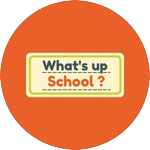

We encounter the same issue as with the logo. We had to choose crucial visual elements to represent our project. After choosing our main colours, we decided to emphasize our trip by train, therefore picking the logo you can see everywhere on our website :
#3 Create our social media
With our name, our graphic charter and our logo chosen, it was now time to create our social networks to share our adventure with the world.
Due to the nature of our learning expedition, we decided to focus on LinkedIn and Instagram. You can go visit those accounts by clicking on the icons below (do not hesitate to follow us to stay in touch !) :
On our accounts, we posted about our itinerary and about the school systems of some countries we visited. We invite you to check our pinned stories on Instagram if you want to trace our trip with pictures!
STEP 3
Plan our field research
#1 Select interesting schools
Due to the length of our learning expedition, we decided to focus our research on the school inside or in the neighbourhood of the European capital on our list.
Regarding the kind of schools to choose, we targeted students between 12 and 16 years old because children take the PISA test at 15 years old. That way, we could see how students are educated before and after passing this test. Depending on the school system of each country, we focused our research on secondary schools, but also on primary school and sometimes on high school.
Therefore, crossing those two factors, we searched for primary, secondary and high schools inside and close to European capitals. We used different keywords to search for those kinds of schools online. During our trip, we also relied on the contacts of the teachers we had already met.
#2 Contact the selected schools
School is a highly protected environment, which is a very good thing for children. However, it is difficult for external actors like us to make contact with school, or with the right person…
In order to overcome this limitation, we had to redouble our ingenuity to convince the schools to be willing to receive us. Before our trip, we focused mainly on getting in touch with head teachers using the contact forms on school websites. Then, as our trip progressed, we explored other less conventional but often more effective means of communication. You can find the main ones used below:
- Our own network (BJAB)
- The schools’ websites, contacting schools through their contact forms
- LinkedIn, contacting directly teachers to visit their classes and school
- Instagram, contacting directly the student offices
#3 Plan our visits
Once we found interested teachers and headmasters, we had to find a convenient date for everyone to organize our visit. We had to take into consideration several factors such as exams week and summer vacations during which we could not visit schools. We also had to deal with the end of the COVID-19 pandemic. As a precaution, numerous schools were reluctant to welcome external visitors in their schools in order to not spread the virus among their students.
We also had to combine school availabilities and our own planning, especially our allowed time in each country. Therefore, it was quite challenging on the logistical front, as shown on our planning:
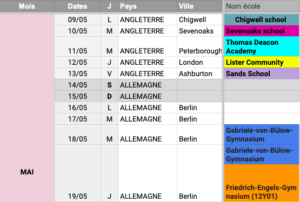
STEP 4
Go on our trip
#1 Adapt our plan to the field
Even if we planned a lot of things ahead, we had to make a lot of changes regarding the reality of our field study. In such a learning expedition, adaptability is the key.
For example, we adapted the kind of schools we targeted to the opportunities that came our way. Therefore, if we mainly visited secondary schools, we also visited primary and high schools when we had the chance to, for example at BJAB in Brussels.
We also had to adapt our list of questions regarding the reactions and the answers of our first interviewees. Our interviews became more structured over the weeks as we honed our skills in this particular context of education. For example, in the beginning, it was difficult to build rich exchanges with pupils, who often gave very short answers to our questions. At the end of our trip, we knew what question to ask to engage with them.
We also had to adapt our expectations to what the schools could offer. In some cases, we were lucky enough to visit the school, attend some classes and interview teachers and students, but unfortunately, it was not the most common in our trip. We tried to make the most of the time our partners could give us. For example in Poland, even if some teachers could not introduce us in their schools, we offered to meet instead in a coffee shop to do an interview. In Copenhagen, we were only able to interview the headmistress.
Therefore, we adapted our needs to the reality of our trip!
#2 Gather information
We had to determine our note-taking method on the field in order to have to more adapted one.
Because we had only one day or less to see a specific school, our schedules were often very busy. It was great because it enabled us to observe a lot, but it was difficult to process and write down these heavy flows of information. We have been able to observe classes, to do sit-down interviews… But most of the time, we were discussing with some teachers or students on the go, in the corridors or the cafeteria during lunch break, because they had busy schedules too. In those times, it was difficult, even impossible for us to take notes.
Then, due to the busy nature of our visits, we had different ways to keep a record of what we saw:
- The notebook: to take written notes during class or interviews, or at the end of the day to summarize our visit.
- The computer: When it was possible, it was easier for us to type down interviews or presentations.
- The audio recording: It is an even better way to keep files of the full interview and to concentrate on our exchange with our interviewee.
- The camera: We took a lot of pictures to remember our visits. It is quick to take a picture and as the saying goes, a picture is worth a thousand words.
#3 Present our first results
We drew our first conclusions in the middle of our trip, as we gathered enough information about each school and educational system.
We presented some of those on our social media, such as Instagram with for example posts on specific school systems. We also highlighted some features of schools on our Instagram stories. Here is our post about Belgium :
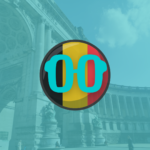
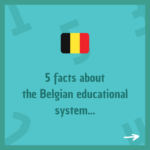
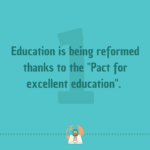
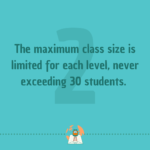
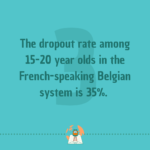
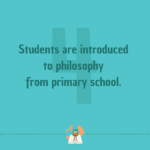
We also had to present our mid-project conclusions to the students of a high school we visited in Poland. It was the occasion to go back on the pedagogical techniques and the schools which particularly stroke us in Belgium, Germany, England and Denmark. If this presentation towards one hundred students and teachers took us by surprise, it was after all a good thing to do at this step of our study.
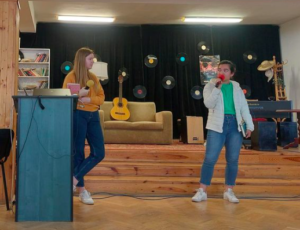
- Liceum Ogólnokształcące Nr XV, Poland
- 31 may 2022
FINAL STEP
Present our results
Our website
You are currently reading our final step…
Since the beginning, we did not want our study to be a mere paper exercise. We wanted to produce a final report to send to teachers and headmasters in all of Europe. We had no claim to produce a report that would be revolutionary in the field of education. However, our goal was to share with others what we saw in order to give them new ideas, to inspire them with innovative techniques, or just pedagogical methods from other countries.
During our trip, the people we met were really interested in receiving our final production. A lot of teachers told us that they would love to do a study like ours but they did not have to time and the means to do so. That confort us in our entreprise. We wanted people to travel by proxy through our report.
In the first time, we wanted to produce a written report regrouping the innovative schools and practices we saw during our trip. However, we thought that a sixty-page report would be rather unwieldy and that it would not represent the spirit of our study.
Therefore, we decided to create a website which is a more accessible and entertaining medium for you and for us. As you’ve probably already seen, on this site you can find our itinerary, photos of our visits, and above all portraits of inspiring teachers and schools, which you can find by clicking below:
We hope you enjoy exploring our site as much as we enjoyed creating it. We also hope that it will help you discover new things about education in Europe today, and that it will encourage you to find out more and innovate on the subject!
Marie and Clementine
